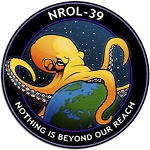I thought I’ll make this thread for all of you out there who have questions but are afraid to ask them. This is your chance!
I’ll try my best to answer any questions here, but I hope others in the community will contribute too!
How do you get the flavor out of it?
Install Mint Cinnamon and then take your pick of the available spices.
But spice tastes like Cinnamon?
Start with a minimalist distro that ships without any desktop environment, of which there are many.
I have a feeling this is a joke. Either way I’m not following sorry 😭
deleted by creator
Xhank xou xor xplaining
You remove any installed desktop environment, so you only have a commandline. You also remove any command shell. Can’t get any less flavoured than that.
You have to go a bit further and remove any package manager and customized utilities. Probably remove a bunch of scripts and aliases from the command environment as well.
It’d probably be less work to install LFS at that point.
Install Linux From Scratch (LFS). Then you can give it your own flavor instead of someone else’s.
deleted by creator
Ctrl Alt f1 f2 etc. Why do these desktops/cli exist. What was their intended purpose and what do people use them for today? Is it just legacy of does it stll serve a purpose?
How can I run a sudo command automatically on startup? I need to run sudo alsactl restore to mute my microphone from playing In my own headphones on every reboot. Surely I can delegate that to the system somehow?
I feel like I’m getting performance below what I’ve been getting on windows for the same games when I’m booting in Linux. Top of the head example is COD WWII, the gameplay and cutscenes stagger a lot but runs fine on windows with the same hardware. I’ve checked that my graphics card is being used by Linux but I just feel like I’m missing some settings that would optimise it.
I’m running Linux mint with a NVIDIA GTX1070. I know there’s some issues with NVIDIA and Linux but would that be the full reason?
I have windows PC with 6 drives, mostly SSD and on HDD that I assume are all NTFS. Two of the drives are nvme(?) attached to the mobo, and I only have one mobo with nvme slots. I have a number of older boards that top out at SATA connections.
If I install Linux Mint, can I format one nvme drive with whatever the current preferred linux formatting is, install Mint, and move the files from the other drives around as I format each one?
Or do I need to move all the data I want to keep to SATA drives, put them in a different windows box, and then copy them over using a network connection?
It’s been a while and I’m guessing my lack of finding an answer means linux still doesn’t work with NTFS enough to do what I’m thinking of.
Linux NTFS support is pretty good. The kernel drivers do all the basics, but you may still want the ntfs-3g driver installed for some of its tools. Ntfsfix has saved me before and I think it’s from the ntfs-3g package
I was read/writing on NTFS partitions back in 2004, so your information that Linux doesn’t work with NTFS is at least 20 years old.
deleted by creator
You can freely manipulate NTFS in Linux. Just make sure your distribution has, after kernel >=5.15, enabled it, otherwise you may need to install the ntfs-eg driver. Other than that, Ach Wiki has info that may help you on any distro:
https://wiki.archlinux.org/title/NTFS
I have done something similar to what you want to do, just needed the ntfs-3g driver installed and “Disks” (gnome disks) application would mount/read/write the disks as usual
It depends on exactly how you plan to do things. The Linux kernel supports reading NTFS but not writing to it. I’m not sure exactly how full your drives are, but you might be able to consolidate some before installing Linux.
There are a couple utilities that let your mount an NTFS file system for read & write, but I wouldn’t trust them for important data.
Edit: This is outdated as of like 2021. Don’t listen to me
The Linux kernel supports reading NTFS but not writing to it.
That’s not true. Since kernel 5.15, Linux uses the new NTFS3 driver, which supports both read and write. And performance wise it’s much better than the old ntfs-3g FUSE driver, and it’s also arguably better in stability too, since at least kernel 6.2.
Personally though, I’d recommend being on 6.8+ if you’re going to use NTFS seriously, or at the very least, 6.2 (as 6.2 introduces the mount options
windows_namesandnocase). @[email protected]Today I learned. Cunningham’s law strikes again I guess
As long as I can read from the second nvme drive I have enough total space to easily shuffle around.
My issue was that I couldn’t fit everything onto just the SSDs at the same time.
Reading works great! If you need to mount the drive manually (IIRC Mint should do this for you) you’ll need to specify that it’s NTFS instead of it automatically detecting the file system but other than that it’s just plug and play
linux can read and write ntfs, edit partition tables and resize ntfs partitions
you could (theoretically, do not do this!) free up 8gb of space on your ssd in windows, defragment it then boot a linux installer and use it to shrink the ntfs partition and install ilnux in that 8gb.
How do I enable DNS over HTTPS or DNS over TLS for all connections in NetworkManager in Debian 12?
It is easy to configure custom DNS servers for all connections via a new .conf file in /etc/NetworkManager/conf.d with a servers=8.8.8.8 entry in the [global-dns-domain-*] section.
How can I configure NetworkManager to use DNS over HTTPS or DNS over TLS via a conf file?
Short version: How do I install apps onto a different partition from the default in Pop_OS! (preferably from within the Pop Shop GUI)?
Long version: I have a dual boot with Windows and I shrunk my Win partition to install linux and eventually realized I wanted more space on the linux side so I shrunk my windows partition again. But Linux won’t let me grow the existing partition since the free space isn’t contiguous. Since I don’t want to reinstall everything, I just created a data partition and have been using that for Steam installs. But I am still running low so yeah, looking to move some apps and realized it doesn’t actually ask me where to install when I install. I saw this thread and figured I’d just ask.
I don’t think there really is an easy way to do this. For sure not as easy as reinstalling.
You can move partitions so they are next to each other and then expand. The easiest way Ive found is to boot a love USB distro, since the partitions can’t be mounted when you do it. Open parted and you can resize and move around.
Backup before you do it!
This is the way. There is a GParted distro that you can boot from a USB-drive that will allow you to move the partition and expand it to take up the free space Windows left.
You should first install GParted to familiarise yourself a little with how the GUI looks. It’s relatively simple, definitely simpler than parted, but it doesn’t hurt to have a look around before doing it live.
It’s also good to note that everything you do in GParted needs to be applied before it’s actually done. You “cannot” accidentally delete a whole partition without actually hitting an apply button.
I definitely meant gparted in my reply. That’ll teach me to proofread better.
If they are LVM volumes, it would be possible. Otherwise, you can move the directories you want to the new partition and use symbolic links to point to the new places. Then again some things aren’t correctly designed, so they may have problems with symbolic links and YMMV.
Use gparted live to shrink/expand partitions
Why are debian-based systems still so popular for desktop usage? The lack of package updates creates a lot of unnecessary issues which were already fixed by the devs.
Newer (not bleeding edge) packages have verifiably less issues, e.g. when comparing the packages of a Debian and Fedora distro.
That’s why I don’t recommend Mint
[interview question]
Assuming a user is a root, can this user create a file that couldn’t be read or deleted by other roots? …by the same user?
what is the difference between Wayland and xorg, why would you choose one over the other?
Is explicit sync a good enough solution to make wayland gaming with nvidia a reality(+ remove window flickering like some people claim it will)? It’s the last obstacle I find now trying to move my main pc to linux, and I don’t really want to use x11.
Pd. Lesson learned, next time I’ll get an AMD gpu.
Is there an Android emulator that you can actually game on? I’ve tried a number of them (Android x86, Genymotion, Waydroid), but none of them can install a multitude of games from the Google Play store. The one thing keeping me on Windows is Android emulation (I like having one or two idle games running at any given time).
Waydroid works, but there’s three main things you need to get things going to replicate a typical Android device:
- OpenGapps: For GApps/Play Store. You’ll also need to register your device to get an Android ID.
- Magisk: Mainly to pass SafetyNet / Play Integrity basic checks.
- libndk / libhoudini: For ARM > x86 translation. libndk works better on AMD.
- Widevine: (optional) L3 DRM for things that need it, eg Netflix
There are some automated scripts that can set this all up. I used this one in the past with some success.
Also, stay away from nVidia. From what I recall, it just doesn’t work, or there are other issues like crashes. But if you’re serious about Linux in general, then ditching nVidia is generally a good idea.
Finally, games that use anti-cheat can be a hit-or-miss (like Genshin Impact, which crashed when I last tried it). But that’s something that you may face on any emulator, I mean, any decent anti-cheat system would detect the usage of emulators.
I see. I knew most of the emulators lacked ARM support, which seemed to be the biggest issue, but this helps. Sadly, I have a 3080 and no money to buy a new card, so I stuck with nVidia for the foreseeable future. I’ll have to test this when I get time, though. Thanks.
An nvidia GPU unfortunetly doesn’t work with Waydroid at all. You would have to use CPU rendering which won’t play any games. You might be able to use your CPUs iGPU if it has one.
You can try using
scrcpy. It’s sort of a remote desktop for Android. You can see your phone’s screen on the PC and use mouse and keyboard with it.
Try Android Studio
By default waydroid uses an x86 android image. Most games are not build for x86.
I have followed this to run an arm android image. https://wiki.archlinux.org/title/Waydroid#ARM_Apps_Incompatible
With that, I was able to install all apps.
Most probably, no. I tried to run bluestacks on wine. Some game works, most of em don’t
Question about moving from Ubuntu to Debian - Package updates and security updates…
On Ubuntu, I seem to get notifications almost every week about new package updates. (Through the apt UI)
On Debian, I don’t see this.
I can run
apt updateandapt upgradeOn Ubuntu, I see this pull a bunch of package data from various package repo URLs.
On Debian, I only see this pulling package data from two or three repo URLs at debian.org
Mainly I am concerned about security updates and bug fixes. Do I need to manually add other repo sources to the apt config files? Or does debian update those repos regularly?
I want to turn a Microsoft surface go 2 into a kali linux machine. I would appreciate any guidance pulling this off. I want use it for learning it security stuff, partly for work but mostly for curiosity. Occasionally I run across malware, trojans, and I want to look under the hood to see how they work. I’m assuming Kali is the best tool for the job and that Lemmy is the place to go for tooling around with tools.










